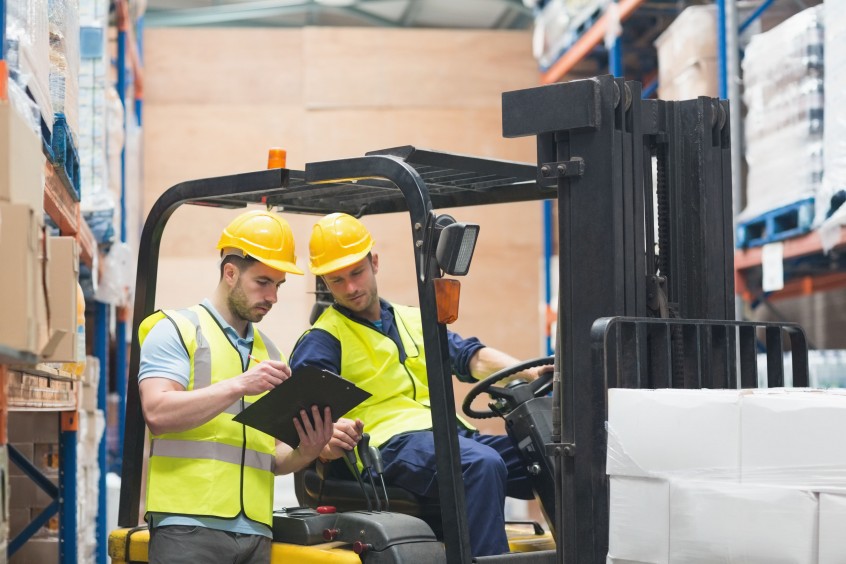When using industrial equipment to perform everyday tasks, you know how important it is to maintain it in proper working order. This statement is especially true in the case of forklifts. Ignoring regular maintenance and safety checks can quickly lead to trouble. This is why every day you use a forklift of any kind, you should do a thorough inspection to ensure your safety, as well as the safety of others around you. These checks save not only people, but products, time, and money as well.
Forklift inspection best practices
The best way to start an inspection is to approach it from top down, beginning with the overhead guard. When inspecting the overhead guard, make sure to inspect welds, bolts, or any other type of area where two pieces of material, especially metal, come together. Are there any loose bolts? Is there excessive rust or loss of material integrity? Knowing these answers will help you know how sound the lift is.
Checking forklift safety features
Next, take a good look at the safety features of your lift. Are all sensors and alarms working properly? You need to check any automatic cutoff switches or sensors to make sure they work as they should. Do your windshield wipers (if installed) and seatbelt work properly? Lights and signals should also be checked to make sure they are in good order and that they do not need to be replaced before you hit the floor running.
Running safe powered industrial trucks
Next, you should check out the various parts of the lift that make it run. This includes checking batteries, starters, cables, hoses, lines, and engine parts to make sure they look and work as they should. Be especially careful to note any leaks, hose kinks, or hose cracks. These components can fail easily and cause a great deal of damage and downtime for you and your lift.
All hydraulic parts, fluids, and sensors should be monitored next. This is a big deal given that if your hydraulics don’t run, neither does your lift. Replace any damaged or broken parts, make sure fluid levels are appropriate, and ensure that all hoses and wires are set up properly and in good repair.
Once you have your lift up and running, there are just a few more things to check. The first of these are the brakes. Make sure all fluid levels are ok. Make sure the brakes stop as they should and that all lights and indicators work as well.
Forklift operator safety
The next area you should check is yourself. Forklift operators should be wearing the proper attire, including fitting clothing and closed-toed shoes. Some companies require forklift operators to wear brightly colored shirts and steel-toed boots. Forklift operators should always be up-to-date on their certification before operating material handling equipment.
Ask the experts at The Forklift Pro
This is of course a very general list of things you need to do, but always keep safety in mind when you are working in and around forklifts. You should have a checklist or guide in place at your place of work. If not, then they are easily found on OSHA websites and in materials available to all industrial manufacturers and distributors.
Thank you so much for your interest in The Forklift Pro. We strive to give you the info and service you deserve. For any questions regarding the forklift safety, contact The Forklift Pro.

